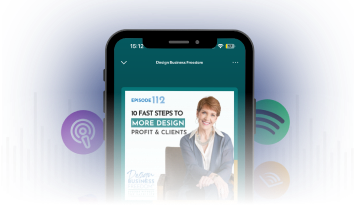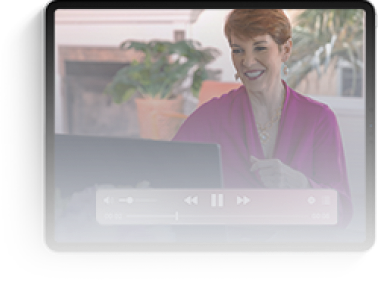Increase Your Design Profits with a Feasibility Package
Today we’re diving into how you can earn higher design fees by increasing your profits with a feasibility package. I recently did a launch class for BOH, and the idea of the feasibility package came up. Let me tell you—I got a boatload of questions about it, and I bet you’re wondering how it works too! So let’s detail it and explore how this can elevate your pricing and your business.
Episode Timestamps
- (0:42) Introduction to the feasibility package
- (1:53) Why it’s important to charge for this service
- (3:06) What’s included in a feasibility package
- (5:01) Coordinating trades days
- (9:05) Adding contingency factors
What Is a Feasibility Package?
The feasibility package is perfect for projects where the scope of work isn’t fully clear—whether it’s a remodel, renovation, or new construction. Essentially, it helps clients determine whether their dream project is, well, feasible! They’ll be asking themselves, “Is this going to work? Is it going to fit the budget?” And that’s where you come in with your expertise to increase your profits with a feasibility package.
Now, the feasibility package can either replace or follow your home review or style and comfort assessment. It’s a higher-level service, and the pricing reflects that. I’ve seen designers charge anywhere from $1,250 to $7,500 for this, but there’s no hard limit. As I always say, the numbers are guidelines, not rules—you can charge more depending on the complexity of the project!
Why You Should Offer a Feasibility Package
Here’s the thing: a feasibility package offers incredible value for both you and your client. You’re helping them make a major decision with expert guidance, and for you, it’s a chance to charge for the work you’re already doing. I know too many designers who end up doing all of this for free—and that’s not what we’re about! Your time and expertise are worth it, and the feasibility package ensures you’re getting paid for that. It’s a great way to increase your profits with a feasibility package.

What Does a Feasibility Package Include?
The beauty of the feasibility package is that it’s simple and straightforward. You’re not diving into full design development. Instead, you’re providing preliminary plans, or even “back of the napkin” sketches (and yes, I really mean that!). This is just enough to get in front of contractors, builders, and installers.
You might also include a style board or project mood board, but you’re not making actual selections yet. The point here is to give the client clarity on what’s possible without doing all the nitty-gritty design work upfront.
Coordinate a Trades Day
Depending on the project, you may need one or two trades days to bring in contractors for estimates. This takes time, coordination, and let’s be honest—it can feel like herding cats. That’s why it’s essential to charge for it! I always recommend offering the feasibility package as a flat fee rather than charging hourly. It simplifies things and makes it clear to the client that this is a structured service.
Provide a Furnishings Investment Estimate
Another key part of the feasibility package is giving the client a rough idea of what their furnishings will cost. Again, we’re not diving into actual selections—this is all generic and broad. For example, if you’re working on a living room, you might say, “You’ll need a sofa, two chairs, a coffee table, lamps, etc.” You can give them an estimated investment range, which helps them understand the financial scope.
Position Yourself as the Expert
The feasibility package is about more than just numbers. It positions you as the expert in your client’s corner. You’re helping them figure out if their dream project is achievable, and if not, you’re giving them the knowledge to make informed decisions. Even if they decide not to move forward with the project, you’ve still been compensated for your time and expertise. And that’s a win in my book!
Share the Contingency Factors
One thing I always recommend including in this package is transparency about contingencies. I suggest telling clients to factor in an additional 15-20% for unexpected costs. Builders may not always share this info upfront, but it’s better for clients to be prepared than to get halfway through the project and run out of money. Believe me, you don’t want to be the bearer of bad news when they’re already stretched thin.
Key Takeaways
The feasibility package isn’t just a great tool for your clients—it’s a game-changer for your business. It allows you to increase your profits with a feasibility package while giving clients the clarity they need to move forward with confidence. Whether you’re working on a remodel, renovation, or new construction, this package can help you earn higher design fees with less stress. And remember, you’ve got this—because I’ve got you, always!
When you’re ready to increase your interior design practice profits, work exclusively with ideal clients, and enjoy the time and resources for your extraordinary life, explore your coaching options. We’ve got your back in the business of interior design.





